I want to thank each one of you for your support in my training career. My Paid Subscribers benefit from my 15 years as a Strength Coach and lifetime as an athlete. Writing is my labor of love. Training is something I would do for free. However, as business owner, this SubStack is my source of income. Thanks in advance for your continued patronage.
The winter season offers ideal weather conditions for summiting Southern California’s remote desert peaks. Often desolate and unforgiving, these arid landscapes require rapid elevation gain without reprieve of shade or water.
Successful Mountain Athletics are built on prerequisite speed, endurance, and aerobic conditioning. Although specific mountain training is primary, this article dissects the general physical preparation (GPP) components that bolster outdoor performance.
Fastpacking Bliss: Hiking and Fastpacking are my greatest passions in life. If I had to choose one thing to do every day, it would surely be going outside with my friends, my Angela, and my dog Darby.
GPP Training
The Double Kettlebell Clean and Jerk (DBCJ) and Zone 2 Step Up Training (Z2ST) are the advanced minimalist’s movements of choice. With pragmatism in mind, MED Mountain Athletics (MEDMA) adheres to minimum effective dose (MED) standards.
This program is designed to be completed from a home gym environment. Requiring two kettlebells, a ruck sack, a step, and preferably a sport watch, the mountain athlete will train consecutively for 5 days and dedicate the weekends to mountain adventures.
MED Mountain Athletics
MEDMA is the next iteration of minimalist training for the outdoors. Since my first article, Minimalist Backcountry Training, I have advanced my education through the avenues, StrongEndurance, All Terrain Conditioning, and The Uphill Athlete.
With greater understanding of the energy systems of the body, I have built my programs on general conditioning, aerobic training, and overall recovery. MEDMA is designed prepare the body’s strength and endurance for the rigors of the mountains.
Mistakes: Mountain GPP
From 2020-2022, I’ve ventured to Mineral King in Sequoia National Park for my Fastpacking adventures. Often 2-3 days in length, these trips focus on ultralight packs and high speed in the mountains - covering 25+ mi and 8000’ + elevation per day.
"Fastpacking is distance trail running and ultralight backpacking rolled into one epic outdoor adventure. You’re moving fast—mostly running or jogging, at times power hiking—while covering long distances and carrying just enough essentials for a multiday journey."
My training leading to these trips consisted of hiking my local mountains 2-3 times per week and biweekly MEDKC training. However, my Fastpacking adventures were starting with heavy legs, a taxed lower back, and a higher heart rate than expected.
My high volume of squatting (DBFS) was leaving my legs fatigued. I realized that a more minimalist focus would better allow recovery for my trail-specific training. After all, what’s the point of hard training if it hinders you from accomplishing the mission?
My good friend Robert and me pictured at the summit of Mineral Peak in Mineral King, Sequoia and Kings Canyon National Park. This final summit was the culmination of a Fastpacking trip that covered 55 mi in just over 50 hours.
Improvements: Mountain GPP
In Minimalist Backcountry Training, I added DBFSs to the DBCJ through variable volume ladders. I also suggested accessory work based on personal need in the form of Pull Ups, Get Ups, and Weighted Step Ups for general purpose strength.
In MED Mountain Athletics, the DBCJ remains the primary movement. However, we eliminate the front squat to allow better recovery of the legs. Instead of Step Ups, the mountain athlete will use loaded Z2ST for aerobic and lower body conditioning.
Although adding accessory exercises can benefit the mountain athlete, they shouldn’t dilute their primary strength and conditioning goals. In minimalist fashion, this program consists of two base exercises to honor time actually spent on the mountain.
Caught in a thunderstorm! On Day 1 of our Mineral King Fastpacking trip, my friend Anthony and I descended into the Kern River Valley and were caught in thunder, lightning, and rain. We waited the storm out under trailside trees. We then descended toward the Kern River and found our first night’s camp. As soon as we lost elevation, we were swarmed with mosquitos, forcing us to wear our pants and rain jackets for the duration of the trip.
Personal Goals: Fastpacking
I have committed to a 25mi, 8300’ of elevation gain hike on 01/21/23. Rabbit Peak via Villager Peak is a gruesome desert hike in Anza Borrego Desert State Park that will require my partner and I to bring all of our water, expertise, and outdoor spirit.
8300’ of elevation gain is stout. But already having hiked Villager Peak, I know the descent is even more brutal. My quadriceps will need to be conditioned heavily to reinforce my knees. My feet and lower legs must be ready for the high hiking volume.
Often capping my Ultimate Direction Fastpack 40L at 20lbs or less, my training ruck load will vary between 20-30% BW (35-60lbs). This loading ensures I add intensity during the course of my training to build my lower body’s strength accordingly.
My loaded Ultimate Direction 40L FastPack: 2 liters of water, BeFree Water Filter (0.6L and 1.0L), first aid kit, Garmin InReach, an abundance of high-carbohydrate snacks, proteins (jerky, tuna packets, freeze dried meals), Ultralight JetBoil stove, LMNT electrolytes, MLD bivy, ground cover, 20 degree sleeping bag, rain jacket, puffy, long underwear, extra pair of socks, iPhone, and a headlamp. I wear my main hiking clothes (shorts, compression shorts, sun shirt, cap) and use Black Diamond Distance FLZ Trekking Poles.
On December 9, 2020, I climbed to the summit of Villager Peak. On January 21, 2023, I’ll finish this unruly trail by completing the hike to Rabbit Peak. The desert floor often starts out hot. As you climb, the temperature can fluctuate 20 degrees per thousand feet.
The Goal: Rabbit Peak via Villager Peak. This day-hike will be closer to 25mi. This is a sketchy trail with exposure, sharp desert cactus, a very steep descent, and no shade. The altitude shouldn’t be much of a factor.
Author’s Note: Although my personal goal is FastPacking, MEDMA is utilitarian and intended for all outdoor sporting purposes. Whether the athlete is a hunter, snowboarder, climber, or mountain biker, accessory movements can further customize the program benefits.
The Double Kettlebell Clean and Jerk
DBCJ: The Attribute Builder
I have written a full length tutorial and training program on the DBCJ. Click here to review the form and technical cues.
The DBCJ is the movement of choice for its emphasis on quarter squats (1st dip & 2nd Dip). When hiking, the mountain athlete rarely performs a pistol-squat style full-depth squat. Hiking is thousands of concentric and eccentric quarter squats (step ups).
The DBCJ is programmed for general conditioning. The full movement works every muscle of body with high demands on the cardiovascular system. Further, the DBCJ helps the mountain athlete maintain adequate power and strength for general health.
DBCJ volume will peak mid weak and drop toward the weekend. Volume is the primary “waving” element in this program since mountain athletes should maximize their specific training over their general strength and conditioning.
The Double Kettlebell Clean and Jerk
For the Full DBCJ Teaching Progressions Click Here. The DBCJ is meant to be performed as a “sprint” ie; rapid clean + jerk + lockout.
My hiking partner Matt and me on top of Mt. Langley, in the Eastern Sierra Nevada Mountain Range. Elevation 14,026,’ over 25 mi roundtrip.
Zone 2 Step Up Training
Z2ST: General/Specific Hiking Conditioning
Z2ST is adopted and individualized from StrongFirst's Heart Rate Step Up Training. I have modified this program to suit more specific Fastpacking needs based on the more well-known Heart Rate Zones.
Step Ups stimulate mitochondrial density through load, speed, and volume manipulation. MEDMA loads Step Ups between 20-35% of BW (using a ruck sack or weighted vest) for 30-60min bouts at specific cadences - steps per minute (SPM).
Z2ST leads to a mix of general/specific hiking conditioning. Training all of the lower body muscles, Z2ST focuses on an aerobic (Zone 2) intensity level. The mountain athlete ensures nasal breathing to accommodate aerobic-only training intensities.
Although StrongEndurance primarily discusses training high anaerobic output with aerobic recovery (anti-glycolytic), I will relay intensity zones in the more well-known Heart Rate Zones as presented in books like Training for the Uphill Athlete.
Author’s Note: For the mountain athlete, a capable sport watch (like a Garmin Tactix) is a very handy tool for checking heart rate zones during HRST. These watches have GPS capability for activity tracking and keeping oneself safe while in remote locations.
Zone 2 Step Up Training
Z2ST Measurement
Box Height - Measured at 75% of Tibia Length. Use weight plates or other implements to achieve the desired box height.
Z2ST Technique
Keep a natural stepping posture as if climbing a staircase.
Step up with left foot, plant right foot and stand.
Step down left foot, touch right foot to deck.
Step up right foot, plant left foot and stand.
Step down right foot, touch left foot to deck.
Repeat this sequence, alternating the stepping foot.
Z2ST Loading
Use a ruck sack or weighted vest loaded with sandbags, water bags, weight plates, or kettlebells to the desired load of the session. I use the Kettlebell Backpack loaded with a weight plate and add an add change-plates to achieve the desired load.
Z2ST Cadence
The Mountain Athlete will count their steps every minute and adjust speed to accommodate 17-19+ SPM.
Author’s Note: I highly recommend using a weight plate in the Kettlebell Backpack. This slim and long plate allows the mountain athlete to position the load closer and along the spine for overall comfort and less back fatigue while performing Step Ups. Use code JPBACKPACK for 15% off the Kettlebell Backpack
MED Mountain Athletics Training
MEDMA Schedule
Z2ST Schedule
Hiking
Hiking training is variable and is based on time available. For multi-day or big mountain climbing, hiking training will become more specific ie; an accumulation of higher-than-volume of the intended target. When I plan my next big mountain trip, I will share an overall deloading of the DBCJ and Z2ST in favor of hiking and Zone 3 and 4 work.
Hiking should be performed as “power hiking.” This style of hiking is fast-paced and focuses on maintaining speed on the hills.
Accessory Movements
Perform accessory movements on DBCJ training days 1-2x/week. Train the Get Up, Pull Up, and Single Leg Deadlift in a circuit. These movements should be performed on Mondays and Wednesday to avoid fatigue for weekend hiking.
Get Up
Get Up: Heavy 1 + 1/4
Pull Up
Pull Up: BW 5-7/4
Single Leg Deadlift
SLDL: Medium, Heavy 5 + 5/4
The Freedom of the Hills
The backcountry offers us solace. The appreciation of Mother Nature and a confrontation with our own doubts and desires, Fastpacking creates the ultimate environment for physical and mental self-discovery. It reveals us to ourselves.
Hiking is simply walking on steep terrain. It is an activity with a low barrier to entry with a vast landscape within the United States to enjoy. I encourage all of my worthy brothers and sisters to enjoy the splendor of our regional, state, and National Parks.
Since Fastpacking is my ultimate passion, I will write several more programs and tutorials on its improvement. For now, I want to leave you with this: Enjoy everything you do. Time is not to be wasted, it is to be cherished. We are what we make our time.
John Parker
January 8, 2023

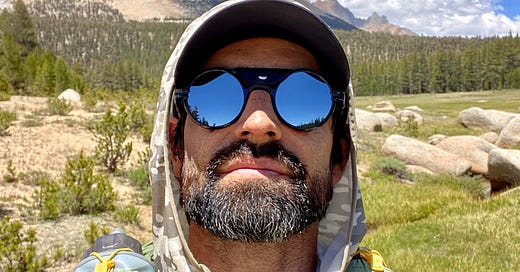



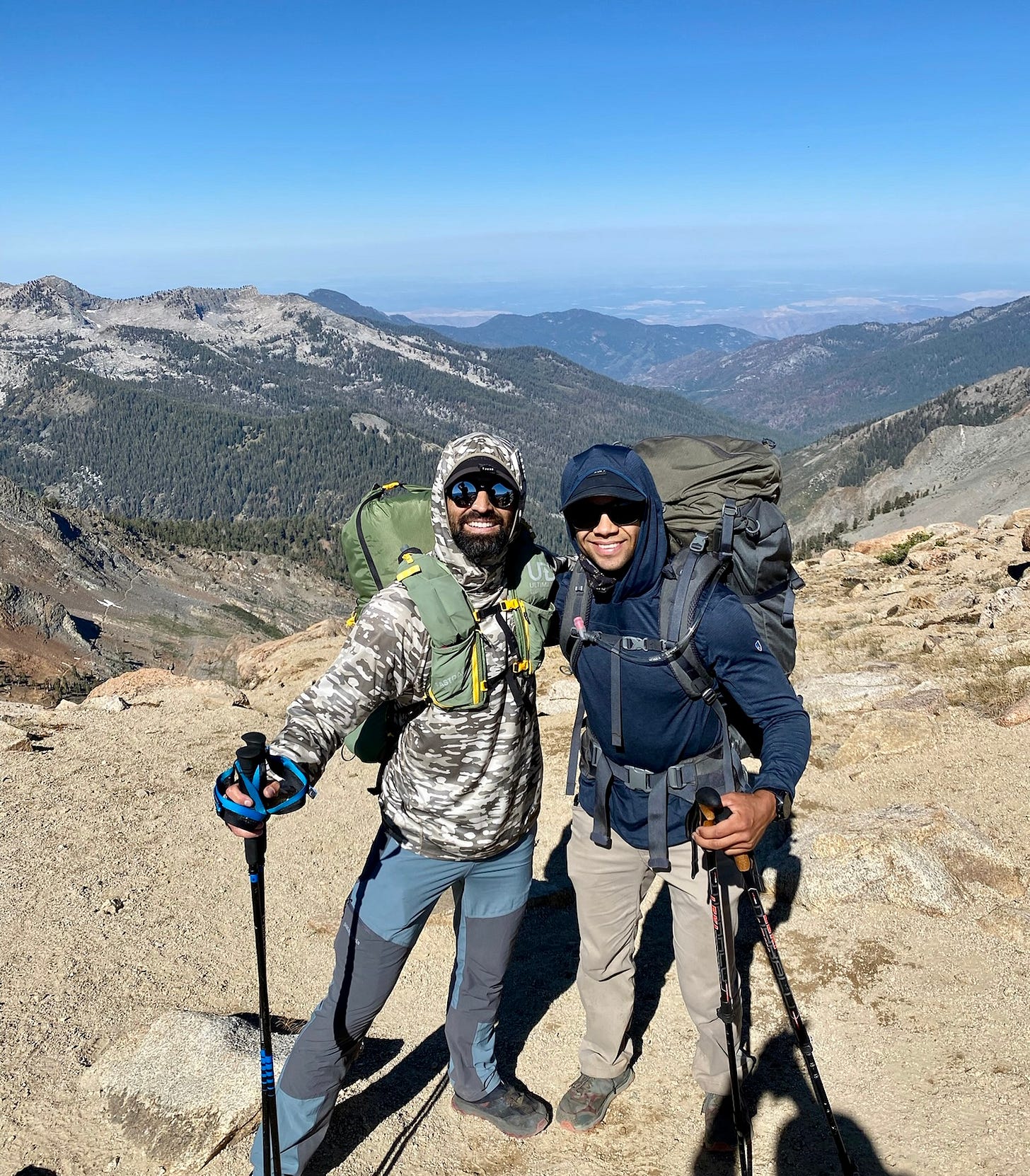
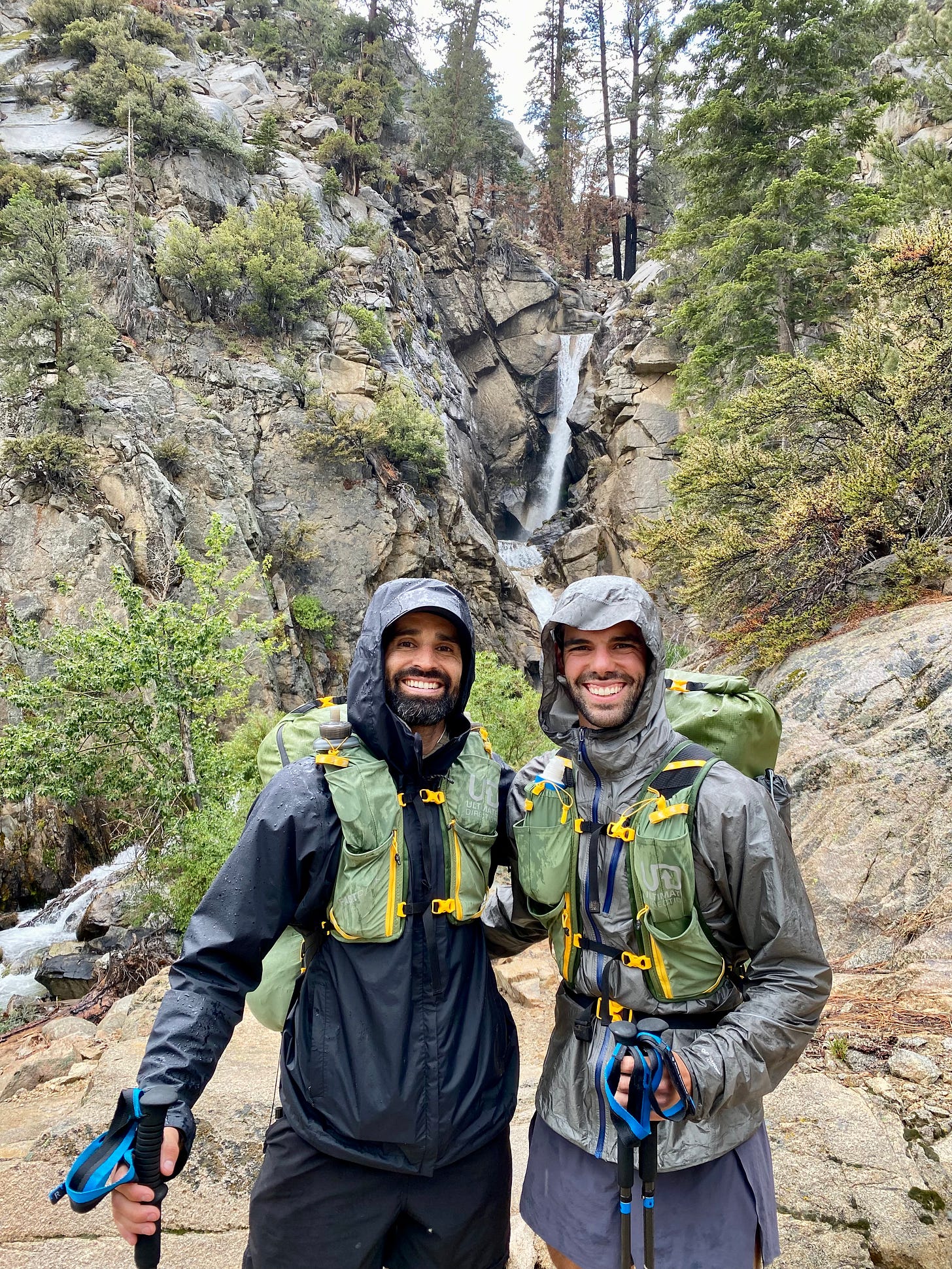

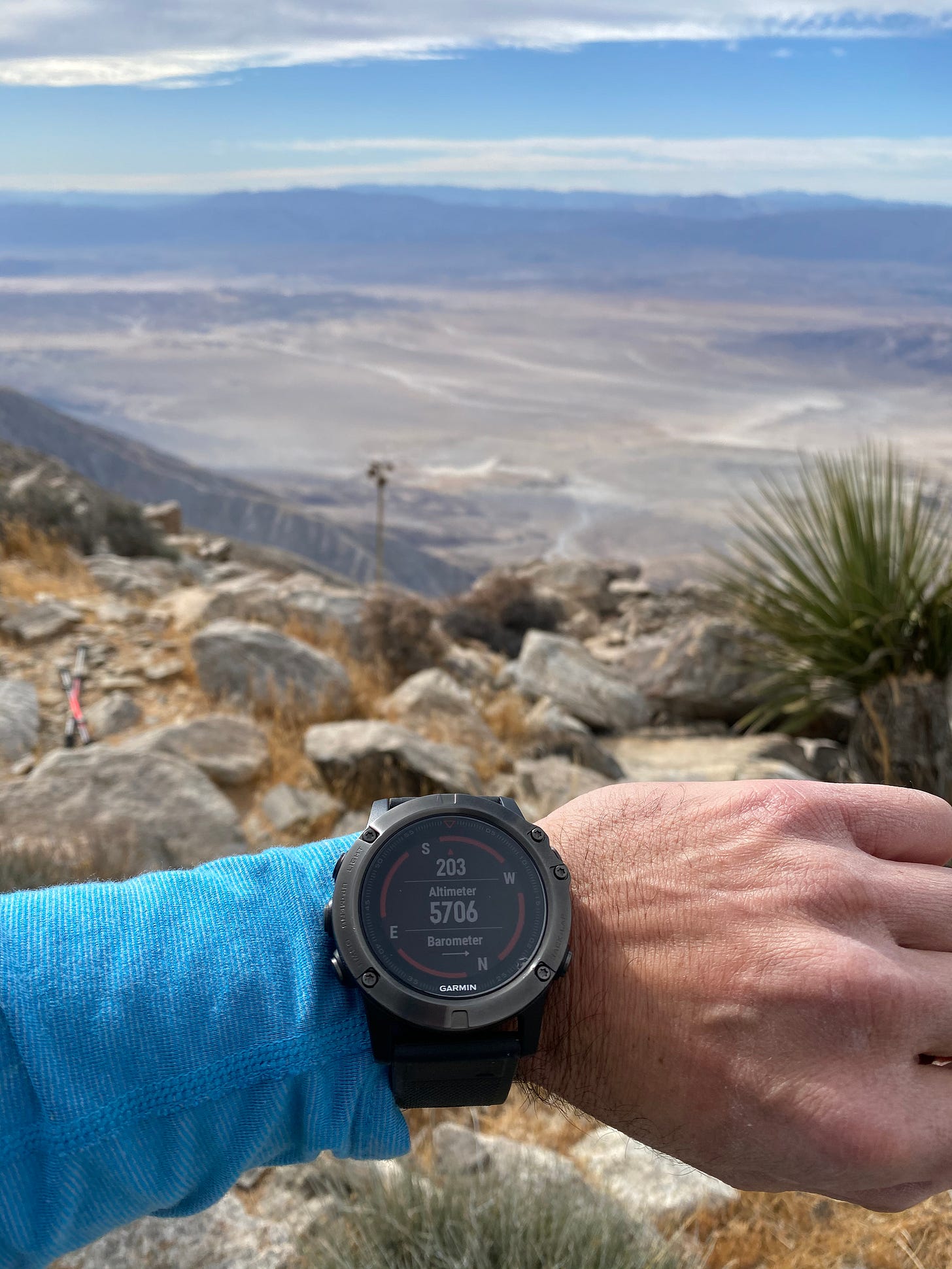
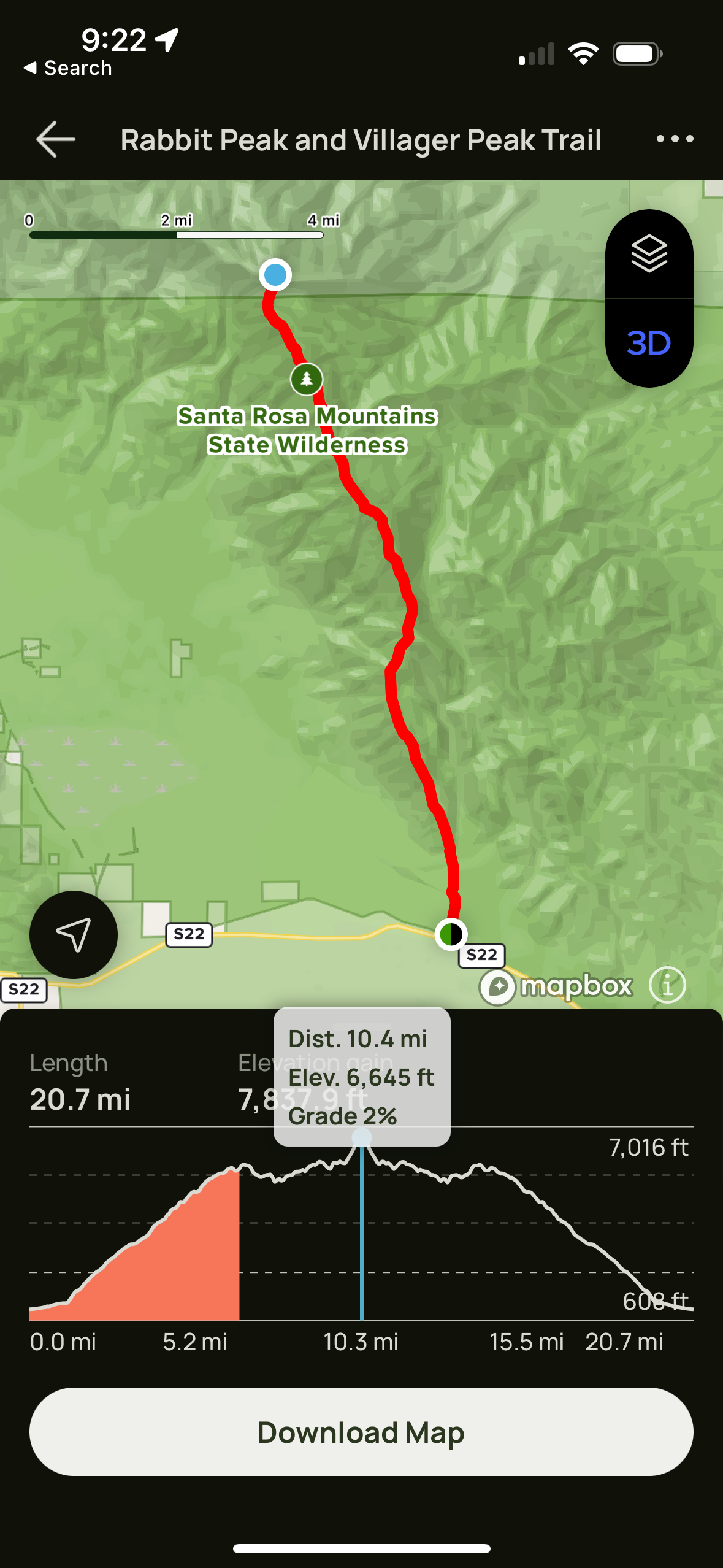
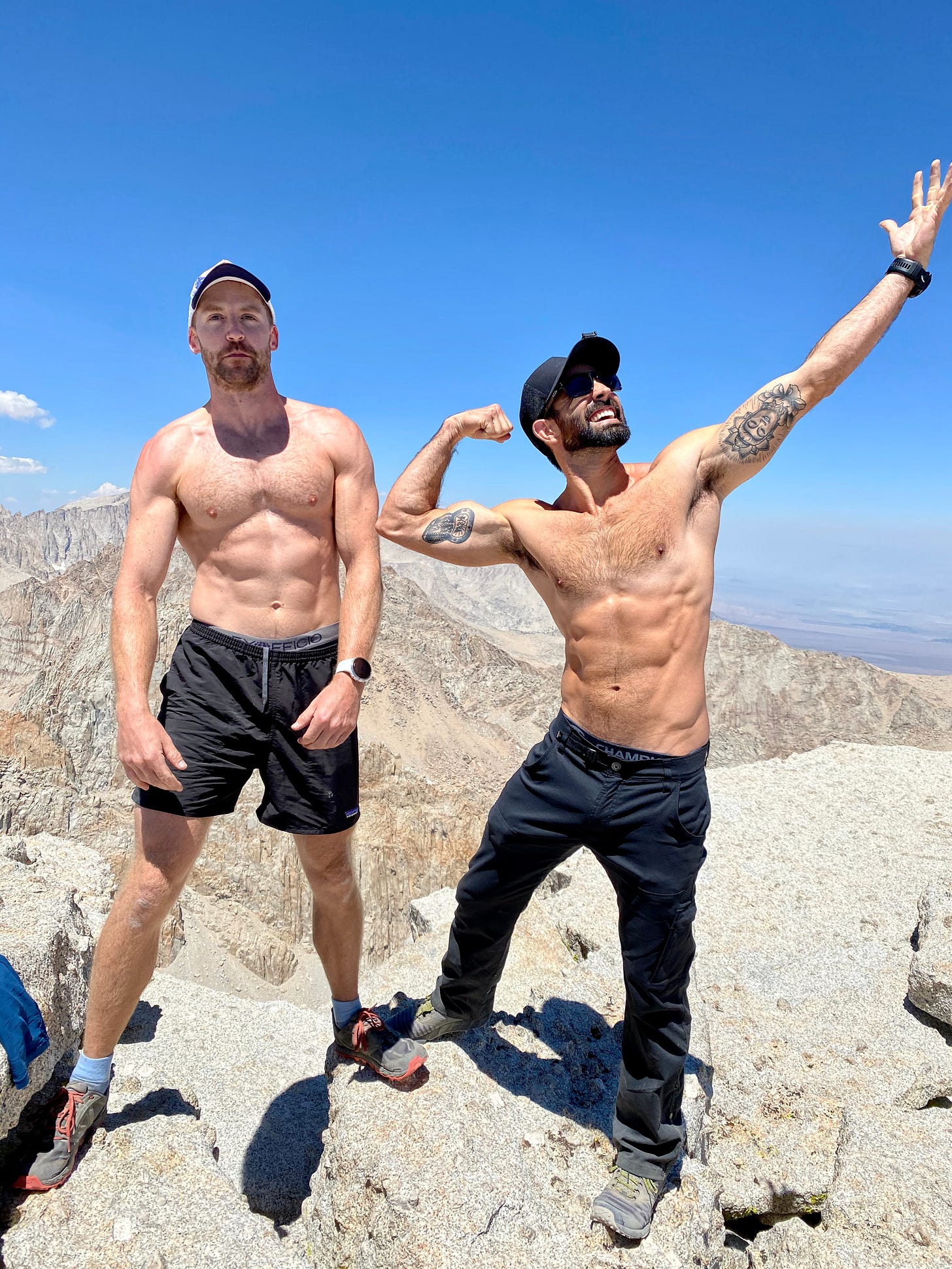


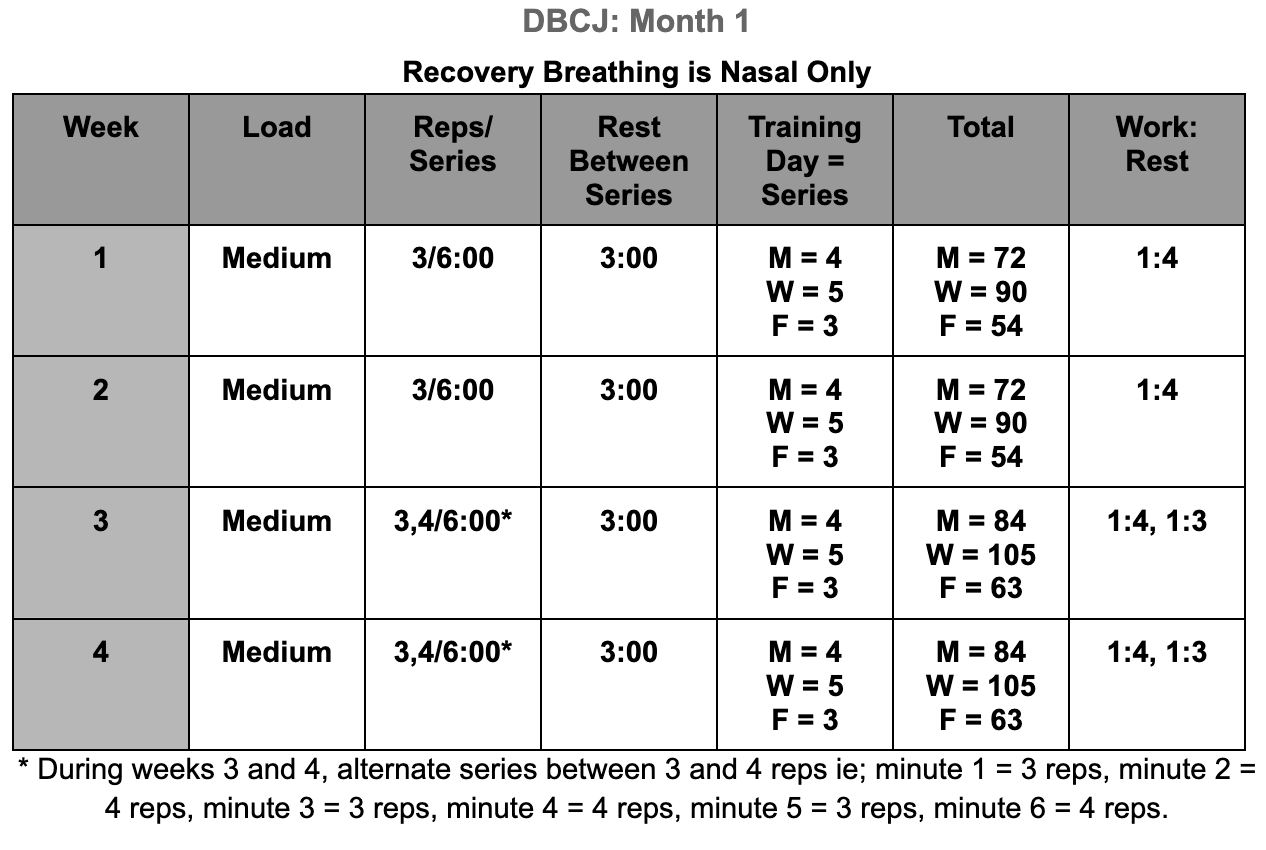





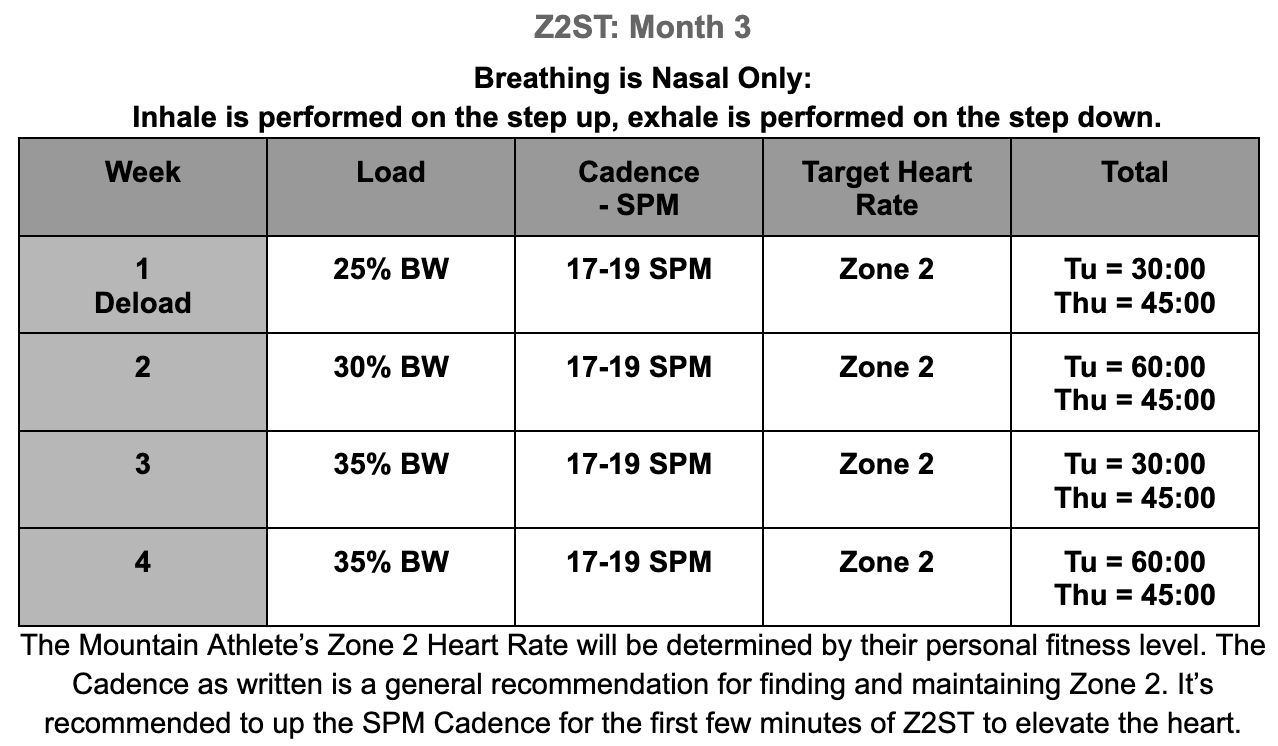

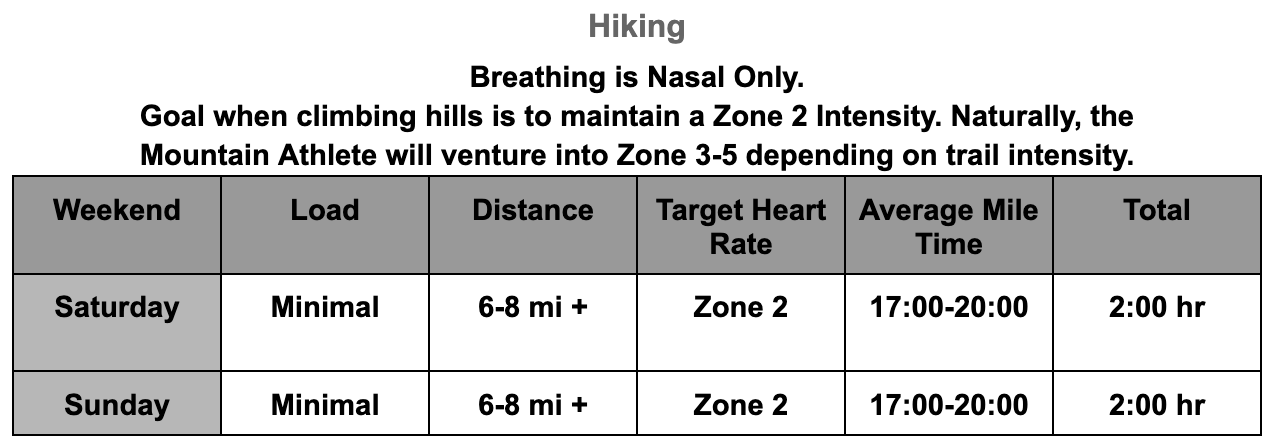
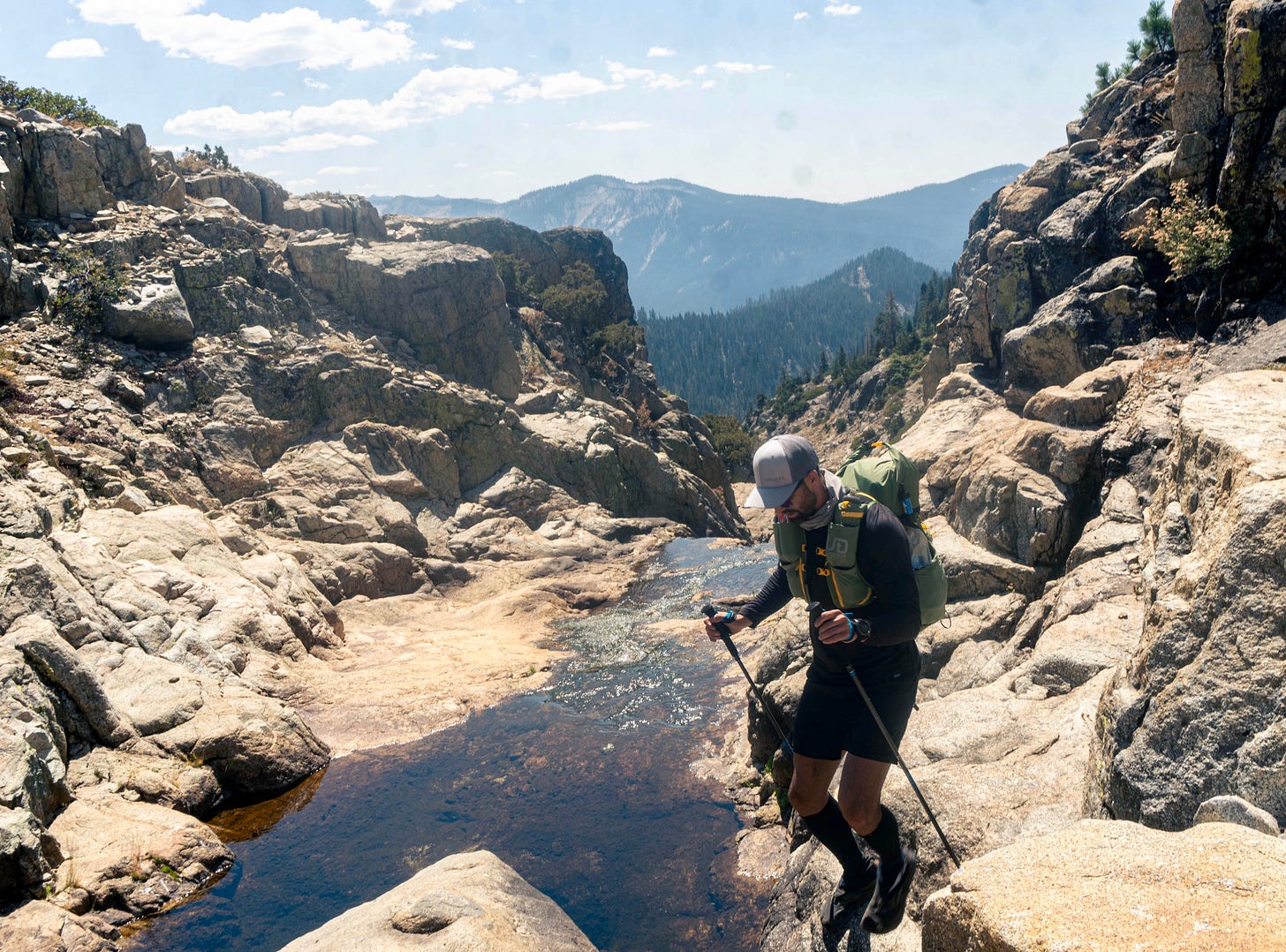
John, this is awesome and something I was looking for. I went through All-Terrain Conditioning and love how you incorporated the DBCJ into the training protocol. I prefer this much better than the KB Snatch. I only have one question on the Step Up Training… What actually constitutes a “step” for the 17-19 SPM? Is one step when a foot hits the box or the ground, or is it when both feet hit the box and then when both feet hit the ground? Thanks!
BTW, I live up in Carlsbad, not too far from where you are I am sure. Just did Whitney last year! Not ready for Fastpacking yet, but getting more curious!
This couldn’t have come at a better time for me. I’m planning to summit Mt. Charleston peak in June for my birthday. And I have a ways to go to get myself ready. I’ve always gravitated toward minimalist routines. This looks perfect for my busy schedule.